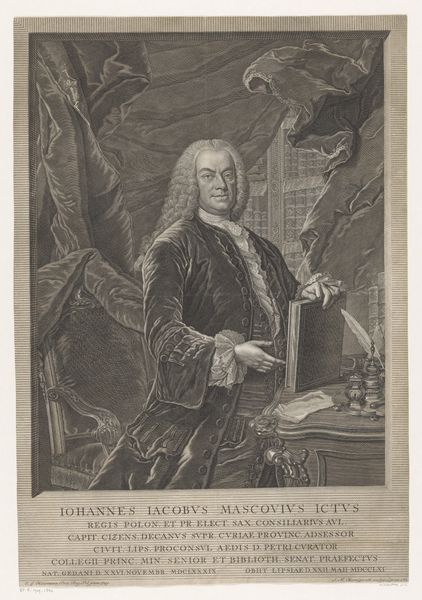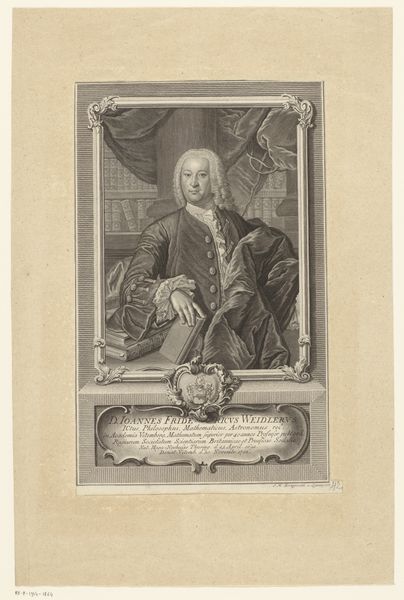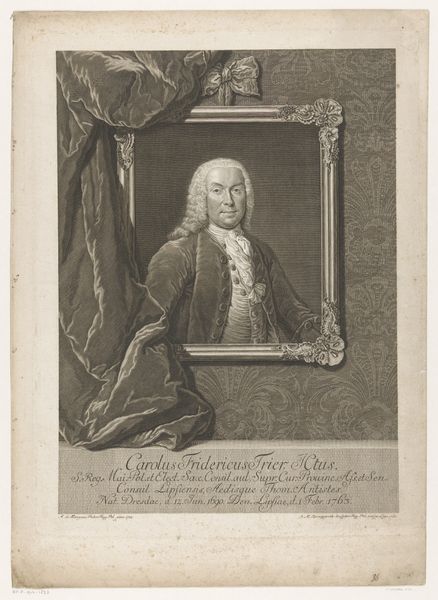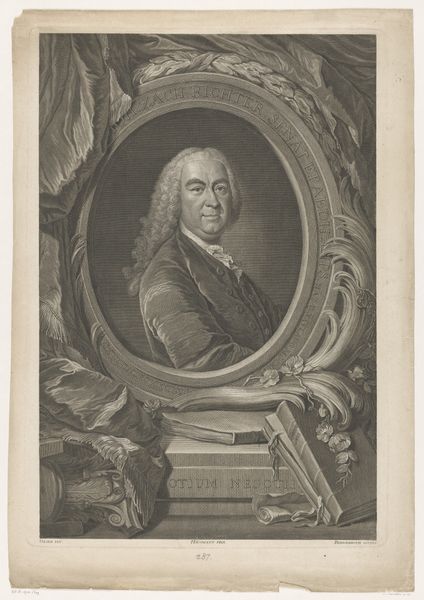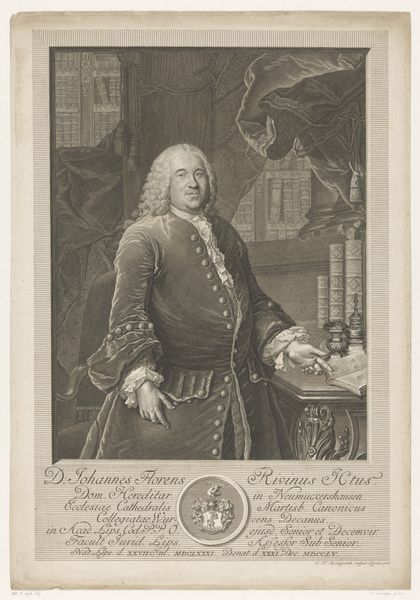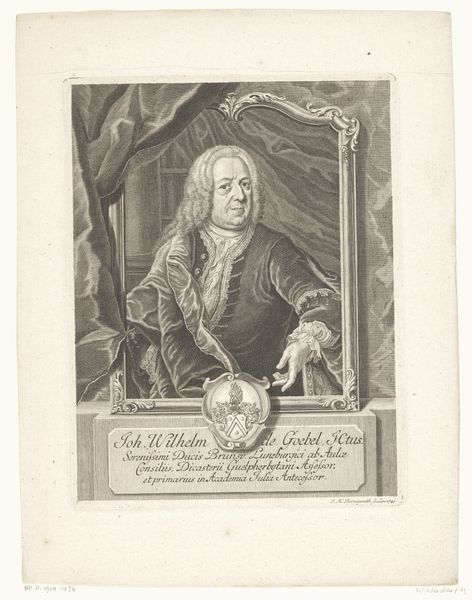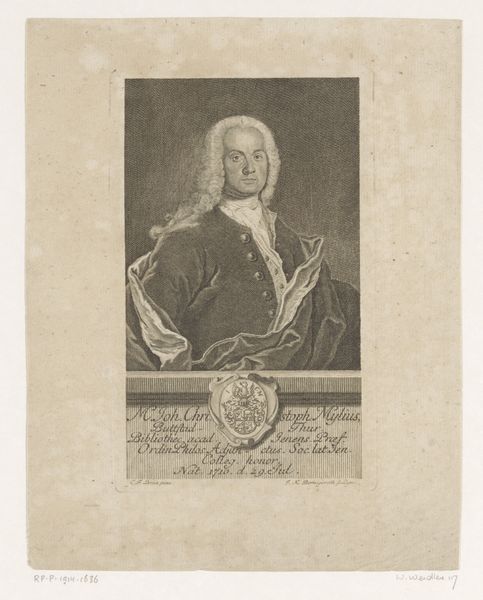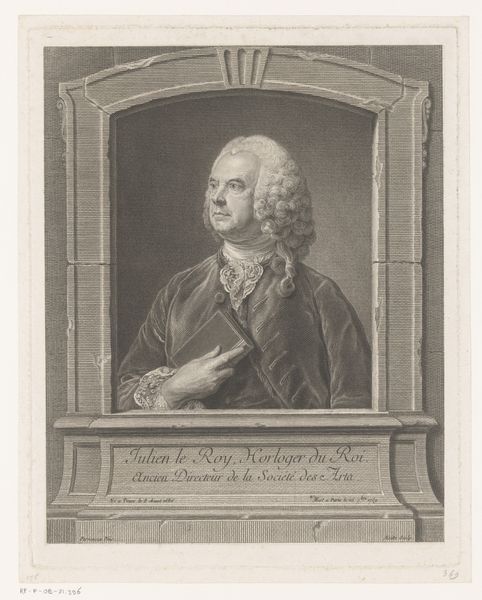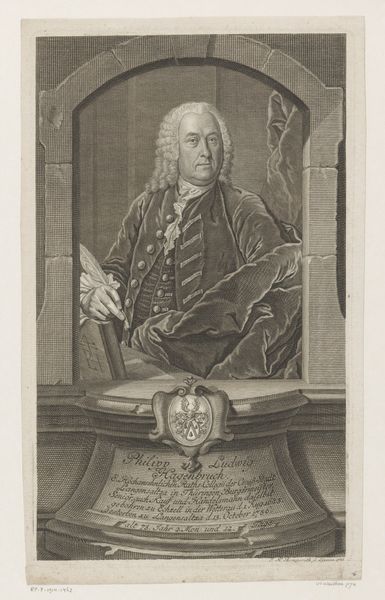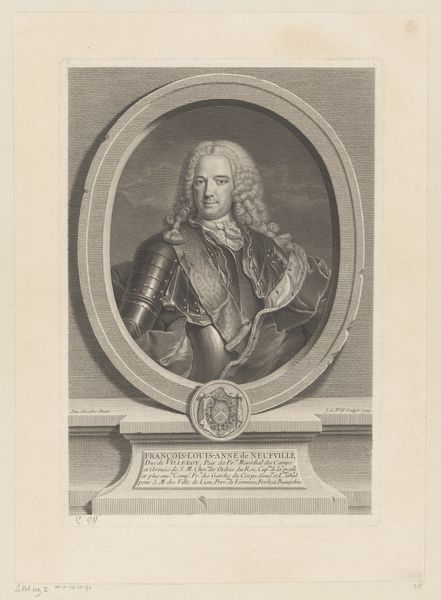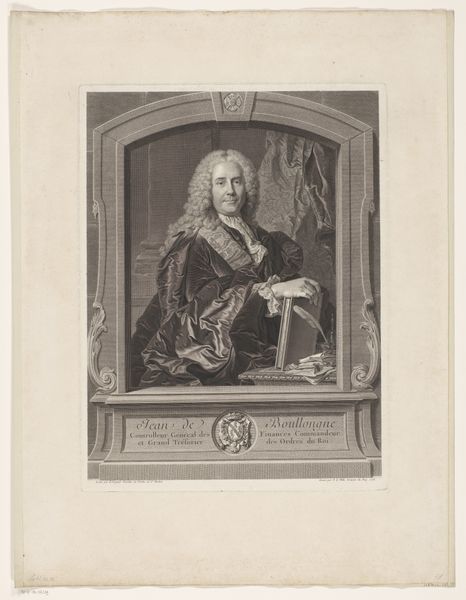
engraving
#
portrait
#
baroque
#
engraving
Dimensions: height 481 mm, width 329 mm
Copyright: Rijks Museum: Open Domain
Curator: Johann Martin Bernigeroth created this portrait in 1758. The full title is "Portret van Georg Friedrich Smith", and it's held at the Rijksmuseum. It's an engraving, a fascinatingly detailed one at that. Editor: It is indeed. My immediate reaction is one of contained opulence. Look at the velvet of his coat, the way light plays on the engraved textures. There's a calculated display of wealth and importance embedded in this image. Curator: The materiality of the engraving itself mirrors that sense of controlled prestige. Bernigeroth skillfully manipulates lines to convey different textures and tonal values, essentially creating an illusion of luxury through sheer labor and craft. Consider the context: engravings were a crucial form of mass communication and status symbol. Editor: Absolutely, the symbolism jumps out. He's positioned with that open book, quill and ink pot prominently displayed. It speaks of learnedness and civic duty. We can assume literacy, intellect, and influence. Then you see the architectural elements, a column, drapery framing a townscape: all elements reinforcing a particular visual language about him and the cultural significance he holds. Curator: I’d add that those details indicate social standing just as much as intellectual pursuits. Owning books, the materials to write, those items signaled access to a whole network of tradespeople, from papermakers to binders. Someone funded the creation of this work too, to create that symbol and distribute it. Editor: Do you find a kind of detachment in his expression? Despite the outward show, I sense an air of reserved calculation, almost like a mask of respectability. I mean, portraits of this type usually did what they were made for – to communicate particular qualities or character traits the patron wishes to project and be remembered by. Curator: Maybe, though engravings in this style often favored formality. What I find really engaging is tracing the physical process of its making, from the original copperplate to each impression pulled and circulated. The social work these pieces achieved. The means of making absolutely impact the work as well. Editor: And through analyzing the iconography and symbolic weight given in the original, and repeated via mass communication in these printed versions, you start to reveal who he was to society, and what society valued at that moment. Curator: Indeed, two sides of the same valuable coin, then.
Comments
No comments
Be the first to comment and join the conversation on the ultimate creative platform.
